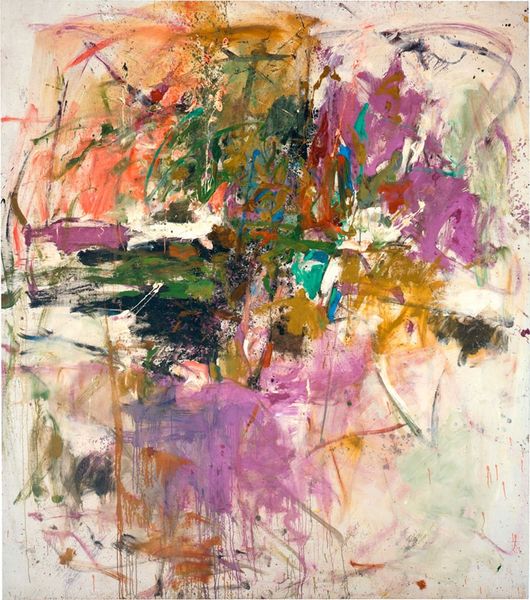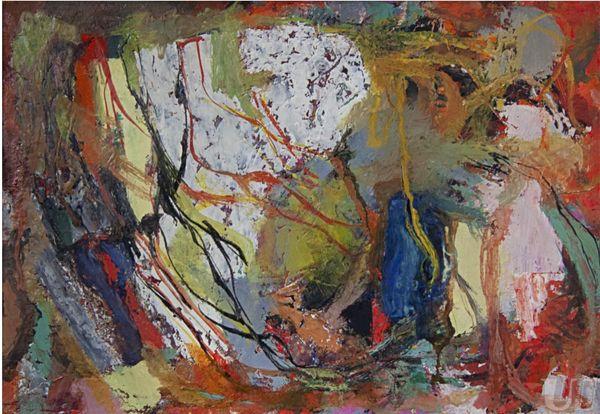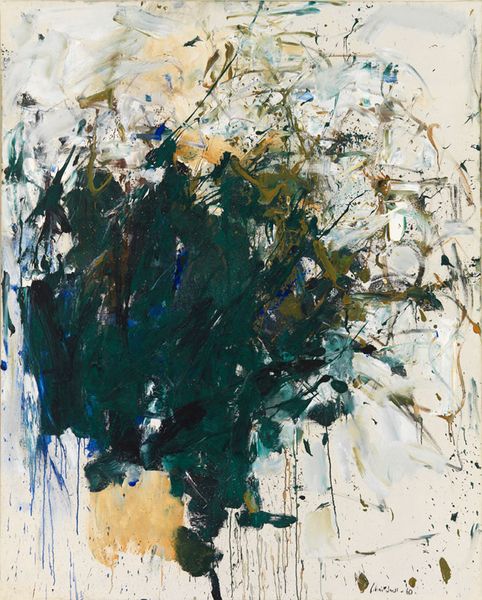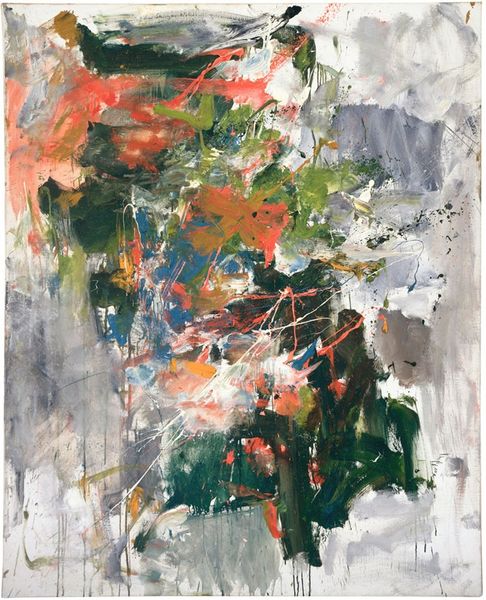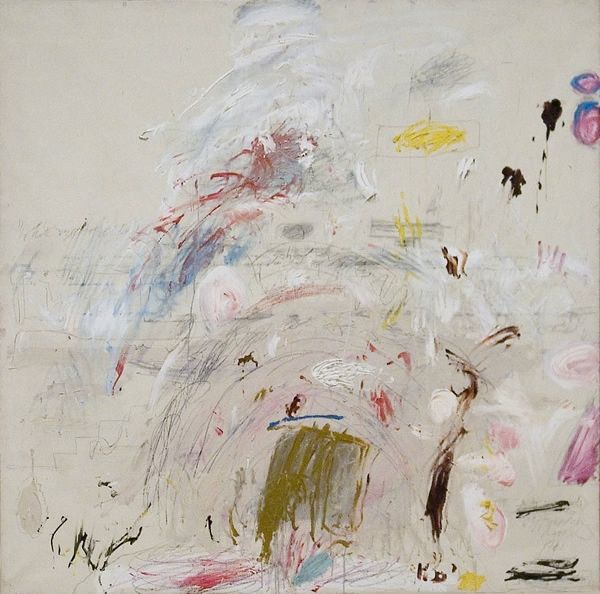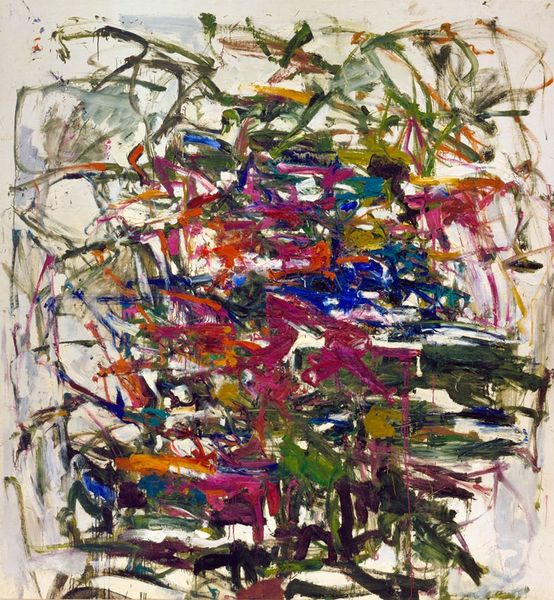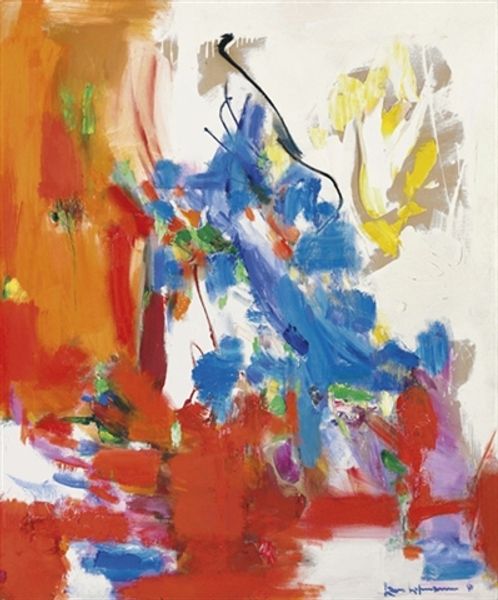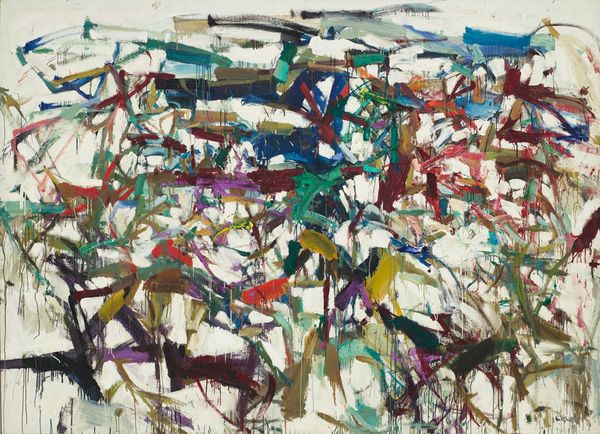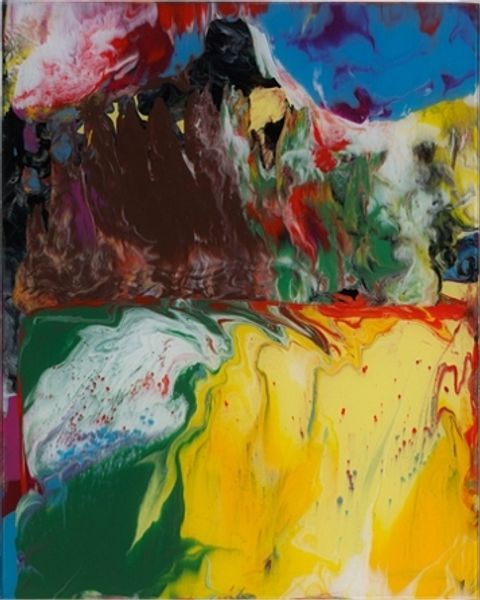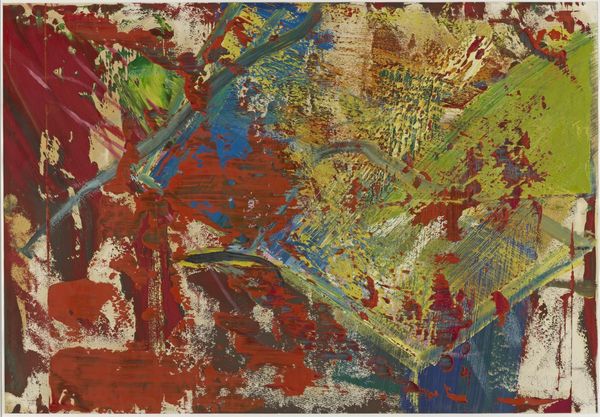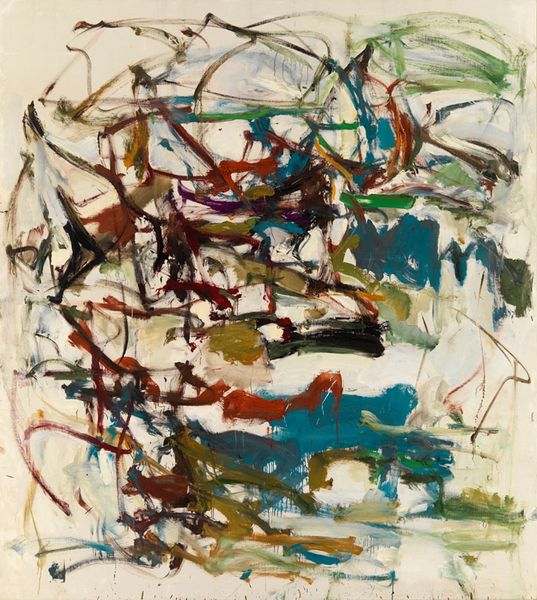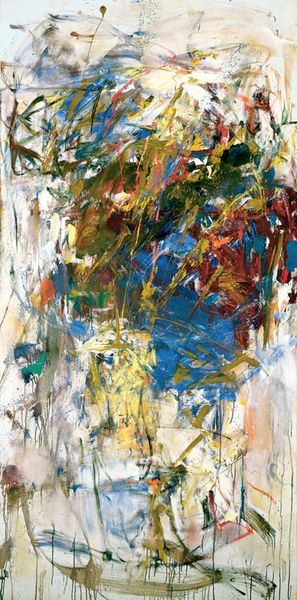
painting, oil-paint
#
abstract-expressionism
#
abstract expressionism
#
painting
#
oil-paint
#
landscape
#
abstraction
Copyright: Joan Mitchell,Fair Use
Curator: Looking at Joan Mitchell’s 1962 oil on canvas, Grandes Carrières, I am immediately struck by a feeling of tumultuous energy contained within the frame. Editor: The name itself, "Grandes Carrières," translating to "Great Quarries," evokes the industrial landscape which often supported post-war society, a landscape of reconstruction after great losses. Mitchell had moved to France in 1959. Do you find a certain weightiness to the socio-historical forces at play, in the artist's location in post-war Europe, that could perhaps inform its somber color palette? Curator: It's an interesting point, considering the name, yet for me, the color doesn’t come across as uniformly somber. I am drawn to how the composition centers on a dense core of earthy browns, blacks, and deep blues which gives way to radiating touches of vivid pinks, teals, and even reds. It’s as though these bright outbursts are vying to escape the central darkness, like nascent beauty emerging from destruction. The structural relationships between these tonal zones fascinates me. Editor: Well, let's remember the broader Abstract Expressionist movement was heavily gendered. The historical narrative often positions male figures like Pollock as the giants, overshadowing female artists like Mitchell. But by embedding her mark so boldly and on a grand scale – and by succeeding so demonstrably – isn’t she actively contesting that established canon? This large canvas can be understood as a potent act of asserting space and visibility. Curator: Absolutely, and within this assertion, consider how Mitchell deploys her brushstrokes: dynamic, impastoed gestures that layer the paint and build a palpable texture. She orchestrates a captivating visual rhythm—one that propels your gaze across the surface of the canvas. Each stroke reads as evidence of a spontaneous and unfiltered creative expression, and creates the conditions for meaning. Editor: Considering that the Museum environment and curatorial selection play crucial roles in validating artistic voices, what does it mean that works such as Grandes Carrières, once perhaps overlooked, now occupy positions of prominence within museum collections and exhibitions? Are institutions really moving towards inclusivity or is this simply a performative action? Curator: A pertinent question indeed! Yet what cannot be performed is Mitchell's mastery, for through these dynamic, almost explosive arrays of colors and painterly marks, she captures something of the beautiful, turbulent human condition, a landscape of interiority expressed through external means. Editor: True, by looking closely at Grandes Carrières, we both engaged with it through different yet complementary lenses, bringing richer insights to the appreciation of Abstract Expressionism.
Comments
No comments
Be the first to comment and join the conversation on the ultimate creative platform.

